Media | Articles
Power of Ten: The V-10 Viper carved its own path
“My Plymouth Fury is parked directly across the road. Where do you live?”
“In the hearts of men,” Sullivan said.
This last line, spoken by a gorgeous and enigmatic artist in Don DeLillo’s Americana, always makes me think of certain automobiles—none more so than the Dodge/SRT Viper. It, too, lives in the hearts of men, and as a consequence of this, and also of its self-proclaimed status as authentic successor to the original AC Cobra, the Viper has been shrouded by a certain mystery since its conception.
We are told—and we tell each other—that Vipers are: dangerous in all sorts of weather, too powerful for any but the truly experienced to handle, prone to terrifying and truck-like behavior on a racetrack, and capable of killing their owners given a mere heartbeat’s worth of inattention.
It does not help matters much that the car’s namesake, the saw-scaled viper, Echis carinatus, is the world’s deadliest snake, responsible for more human deaths than all other snakes combined. You can’t blame people for reading the label on the tin and taking it seriously. Bob Lutz didn’t suggest they name Chrysler’s V-10 paleo-roadster Mr. Snuggles The Fluffy Bunny, you know.
Marketplace
Buy and sell classics with confidence
Maybe he should have, because the mystique surrounding the Viper probably sent a lot of less-than-confident buyers straight to a Chevrolet dealership for what they thought would be a safer and saner experience behind the crossed-flags badge of a Corvette. This was a ridiculous delusion on their part, particularly during a certain time period to be discussed below. Almost all of the deadliest-snake hype surrounding the Viper dissipates the minute you drive any car bearing the badge around a road course. Even the most wicked Viper is a friendly and capable racetrack companion. If you can wheel a Miata competently, you can probably do the same with a Viper—and vice versa, as the two cars share a lot of dynamic qualities. Forget the hype; allow the legend to dwindle in your mind for a moment.

In pursuance of demonstrating this assertion, we asked three Viper owners to meet us at GingerMan Raceway in western Michigan. Mike Cipponeri brought a fine 1994 RT/10 roadster in that shade of blood red familiar from a thousand childhood posters, Steve Urbanec supplied his recently acquired 2003 SRT-10 droptop, and Marty Heitkamp arrived in a fabulous 2016 ACR powered by a 9.0-liter Prefix V-10. All three of these gentlemen are former Chrysler engineers, and they are true Viper believers. They encouraged me to drive without hesitation or concern, and although I stopped short of treating their cars in an abusive or careless fashion, I was able to run them hard enough to obtain quite a number of useful impressions, both individually and as a group.
Conditions at GingerMan were cool and clear for our drive, the track having been washed clean of rubber by a long night’s worth of rain. I decided to start the same way Bob Lutz started: with the simplest Viper built. Cipponeri has owned this 1994 RT/10 since 1997. A member of “Team Viper” from 1989 to 1996, he was assigned to the electrical system. “We knew we could cut costs by using existing parts, and we looked everywhere: Corvette, Ford, even Lotus.” The original front side markers were sourced from a trailer-parts supplier. “When I called them, they said, ‘You know this light is for a trailer, right?’ We changed the optic lens and it was ready to go. I think it looks right, still.”
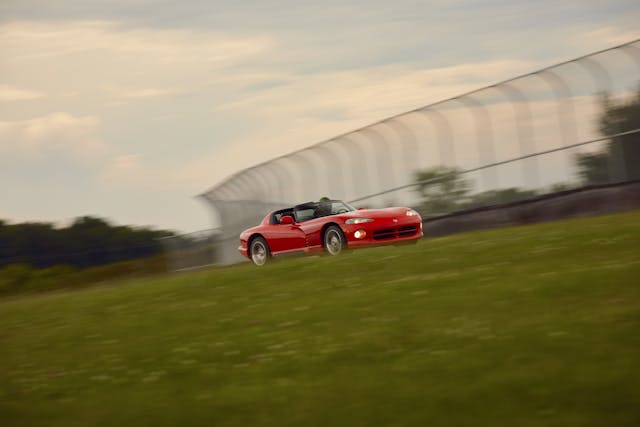
That it does; in fact, the whole car just looks right, one of those designs that seemed to fall right off the auto-show stand into everyday traffic without so much as a once-over in between. Cipponeri has upgraded the leather and a few of the accessories in the interior, but it’s still a bare-bones affair, the gauges in the panel and the dull sheen of the dashboard plastic instantly recognizable from the contemporary Neon and Intrepid sedans. A sticker in the doorjamb warns of HOT EXHAUST PIPES directly below your feet.
A twist of the fragile-feeling manual-key-release ignition cylinder, also familiar from Neons, and the 400-hp, 8.0-liter V-10 comes to life, settling into an unworried idle that immediately marks it as being infinitely more modern than the Cobras it was supposed to succeed. There’s plenty of room in the cockpit—by Miata standards, at least—and the shifter has long, light throws. You wouldn’t want to do a lot of parallel parking with this car, as the corners can be hard to see. Nor would you want to roll it over; my Impact racing helmet is a full 6 inches clear of the roll bar and windshield frame.
There’s no chance of testing my helmet’s rollover resistance, of course; not in this sweetheart of a roadster. I don’t expect it to be fast, because it isn’t, at least not by modern standards. Contemporaneous testers struggled to get the early Vipers down to the 13-second mark through a quarter-mile; today, a dealer will happily sell you a 5300-pound Jeep Grand Cherokee Trackhawk that can more or less count one Mississippi, two Mississippi before running the big snake down at the 1320 line.
Yet the RT/10 makes speed down GingerMan’s back and front straights in steady and relaxed fashion, revving the big V-10 across a short sweep of the dial all the way to the front of fourth gear before it’s time to get on the brakes. Even taking the vintage spec of brake pad and tire into consideration, this Viper feels slightly under-braked, a concern brought into sharper relief by the near impossibility of heel-and-toeing at pace. I get the feeling that you could do it if you really got into the last inch or so of brake-pedal travel, but to do so would be to court a lockup of the rear wheels; the Viper did not get antilock brakes until 2001.
There are no such worries about the steering, which is direct and informative. GingerMan’s Turn 5–6 combination is always willing to reveal a car’s shortcomings in that department. You have to roll on the brakes while cranking in a bit more steering angle to get through 6 and set up for the short run to Turn 7. In period, the Viper was famous for developing serious levels of cornering grip, and so it proves again here, cheerfully accepting a lot of g without wagging the tail or washing the nose too much. Many sports cars are tortured here by a lack of gearing, torque, or both, but the Viper steams out in third gear without complaints. It could do it in fourth as well, and for an entire lap, I treat the car like it has no gearshift at all, leaving it in that direct-drive fourth gear.
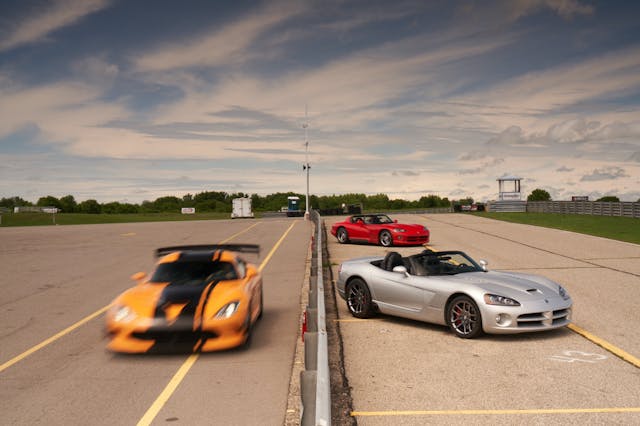
For the road testers of the era, who used the rather fussy and flexy L98-engined C4 Corvette as a benchmark, this Viper must have been a revelation. On a whim, I trail-brake it into Turn 7 and feel how ably the chassis adjusts its entry angle. It feels race-bred and not very street car–ish at all, yet without the snap-happy tail that true race cars need. And it never gets hot or bothered, even after 10 laps. I don’t want to come back to pit lane.
But I have every reason to, in the form of Steve Urbanec’s silver SRT-10. Although I like and enjoy the early Vipers, it’s not until the third generation that the cars started to display significant track pace. It’s usable on the street, as well. Urbanec and his wife drove the car here, with a trunk full of collapsible chairs, and they run the effective A/C as much as they want. Dismissed as “the Dodge Corvette” at the time by many Viper loyalists, the third-gen car is simply better at doing all the, well, car stuff.
The spec sheets will tell you that it’s a 500-hp car against the 400 horses of the original or the 415 of the second-generation cars, and it’s obviously packing a little more brake, but the spec sheet cannot convey the comparative ferocity with which the ’03 attacks GingerMan. It’s perhaps 10 mph faster in every corner, with vastly shorter brake zones and a pedal arrangement that encourages leaning on the ABS at every turn-in point. You could walk out of a modern C7 or C8 Corvette, get in this car, and not feel like you were giving up much in the way of pace.

This is the Viper that feels like a big Miata; you can fling it toward the apex with the same kind of ignorant enthusiasm, secure in the knowledge that it won’t spin unless you truly provoke it. The power is linear and majestic, although the long-travel accelerator pedal that serves as a poor man’s traction control is an annoyance on-track, and it marginally hampers heel-and-toe. Visibility is superb, the seats are good, and everything falls readily to hand, as my august auto-writing predecessors were wont to say.
The 600-hp variant of this car that debuted in 2008 is just about my favorite convertible-top track rat, but this one is plenty exciting despite its lack of the demented redline rush present in the later models. With Hoosiers on all four corners, you could break some GT3-shaped hearts at a local track day. And yes, you can run the A/C on-track if you like.
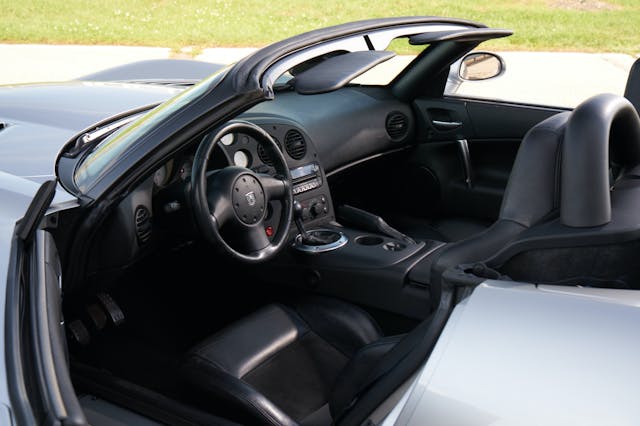
Of course, nothing about the interior suggests an $80,000 car—or even a $20,000 car—but that’s the cost of pro-level pace at Corvette prices. About that; this supposedly vicious snake is far, far calmer on track than a C6 Z06 Corvette. Heck, it’s easier to drive than a C5 Z06. If you bought a Viper in 2003, or even 2008, thinking you were getting an untamed beast, you were wrong. It’s easy as pie to drive, and half as tiring as the equivalent Chevrolet. It’s just fast.
Urbanec’s car, which he says has needed nothing since he bought it, displays some traces of a hard life in the worn-bushing rattle from beneath and the occasional sharp kick from the steering as the front wheels negotiate a curb at speed, but it looks awfully nice for being nearly 20 years old. (Editor’s note: Mr. Urbanec disagrees with my characterization of his car; my impressions came from a few quick laps and my experience with other Vipers of this vintage — jb) I can’t help but think that this is currently the best Viper to buy if you’re at all cost-conscious. It is very quick and very nice to drive, and it won’t run you as much as a new single-family home in the Midwest.
Ah, but excess is part of the Viper culture. In period, these 2003 Vipers were often treated to Paxton superchargers and other outrageous power-adding conversions, usually by owners whose most extreme experience behind the wheel came courtesy of longer-than-average service times at the local Sonic Drive-In. The SRT engineering team had delivered a good car, particularly from 2008 on, but the owners were always demanding: faster, pussycat.
Marty Heitkamp’s 2016 ACR is the culmination of this mentality, both as a factory-fresh car and as it sits before me in pit lane, incongruous in a McLaren-ish papaya orange hue and rumbling with the menace of a 9.0-liter conversion. The final fifth-gen Viper ACR and ACR Extreme were arguably the finest American sports cars ever created; they were the best at balancing the demands of the stopwatch and the heart, combining the deft racetrack touch of a C7 Grand Sport with the manic pace of a C7 ZR1 before either of those cars existed anywhere but the drawing board. ACRs had it all: power, handling, brick-wall brakes, and an intelligently conceived electronic safety net that only intervened when absolutely necessary.

It’s Heitkamp’s second Viper, bought used on the way back from a family funeral and then driven relentlessly to its current odometer reading of well over 27,000 miles. On the theory that too much is never enough, he spent about the price of a solid-condition 2003 Viper on the 9.0 package from Prefix; then he color-matched a few items under the hood and elsewhere, because Viper ownership is as much about that parking-lot swagger as it is about the back-straight jump to hyperspace.
And—my God—can it do that second thing as well as the first. This car accelerates with genuine shove-your-head violence, accompanied by a deranged soundtrack best understood as what you’d have gotten if the self-aware truck in Maximum Overdrive had been a UPS cargo hauler. It’s not quite the superbike rush of a McLaren Senna, but it isn’t far off and you get to shift your own gears along the way, just as Lutz intended.
It stops with cartoonish force as well, thanks to carbon-ceramics that won’t fade under anything but the most hateful abuse. GingerMan feels like a Sunday drive in the first-gen RT/10 and an engaging experience in the SRT-10, but here, it’s a matter of planning. You have to think about every corner before you get there, because you’re going to get there sooner than you think. Both the front and back straights are dispatched at speeds approaching and possibly just exceeding 140 mph. By comparison, a Spec Miata is lucky to reach 98 or 99 in the same stretches.

This car is lacking the full Extreme aero package and the brand-new tires that make a properly sorted fifth-generation ACR a Le Mans car for the road, but it’s still agile enough to bring my party to a halt on the third lap, when my passenger indicates a pressing desire to vomit. I’m afraid the grass outside Turn 6 won’t recover until next season. Good news: Heitkamp’s car is even faster once you take an additional 130 pounds of passenger out of it. To quote Melville: Hurrah! This whale carries the everlasting mail!
Yet there’s nothing particularly dangerous or scary about this fifth-generation Viper. It goes as fast as you want, and no faster. At no time did it threaten to spin or lose its composure, despite being aggressively trail-chucked into a corner at triple digits. I didn’t even feel the need to turn the stability control all the way off—although I know from previous testing against the clock that doing so will get you another half-second of pace per lap. In these conditions, it never intervened. If you can drive a Miata, you can drive this car. Yes, it comes at you faster, the same way Nolan Ryan came at the batters faster than a AAA-ball journeyman. But if you drive it carefully for a half-day or so, you’ll soon find yourself flat-out everywhere.
Come evening, with all three Vipers gone from the paddock and only my dour Honda awaiting the ride home from GingerMan, I felt fairly seized by sorrow. At not being able to drive them anymore, at not owning one, at not knowing when I’d get another chance. These cars are satisfying at a level that a modern Ferrari or McLaren can’t quite touch; they are determinedly analog devices that demand your full attention and reward you for giving it. No, they aren’t perfect, they fail to reflect the admirable virtues of our socially conscious modern society, and they are anything but upscale, but as Prince Hal said, we could better spare a better car.
With its constant improvement, its unflinching focus, and deeply satisfying abilities both on and off the racetrack, the Dodge Viper redefined the idea of the American sports car. It wasn’t just a great product by itself; the super serpent likely forced the Corvette to become better than it could have had it toiled in the field alone. We are poorer for its disappearance, but we will not forget it. From 1992 to 2017, the Viper lived in the Mack and Conner Avenue assembly plants. Today, it lives on: in the driveways of its owners. In the memories of those lucky enough to drive it, if only once. In the hearts of men.
1994 Dodge Viper RT/10
Engine: 488-cid V-10
Power: 400 hp @ 4600 rpm
Torque: 465 lb-ft @ 3600 rpm
Weight: 3500 lb
0–60 mph: 4.3 sec
Top speed: 168 mph
Price when new: $61,975
Hagerty #2-condition value: $46,500–$62,500
2003 Dodge Viper SRT-10
Engine: 505-cid V-10
Power: 500 hp @ 5600 rpm
Torque: 525 lb-ft @ 4200 rpm
Weight: 3400 lb
0–60 mph: 3.9 sec
Top speed: 190 mph
Price when new: $85,109
Hagerty #2-condition value: $45,000–$55,000
2016 Dodge Viper ACR (base)

Engine: 512-cid V-10
Power: 645 hp @ 6200 rpm
Torque: 600 lb-ft @ 5000 rpm
Weight: 3400 lb
0–60 mph: 3.2 sec
Top speed: 177 mph
Price when new: $122,490
Hagerty #2-condition value: $175,000–$190,000
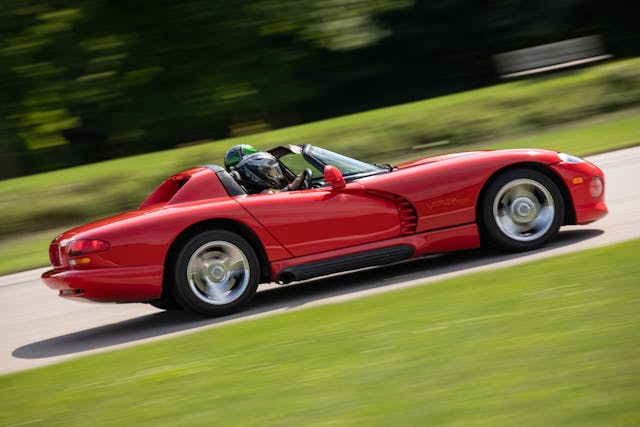
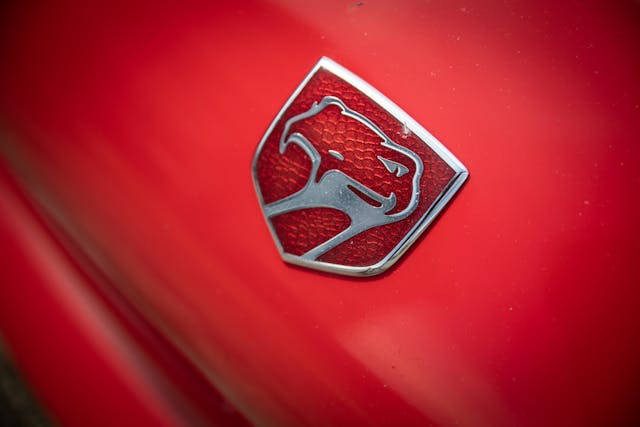








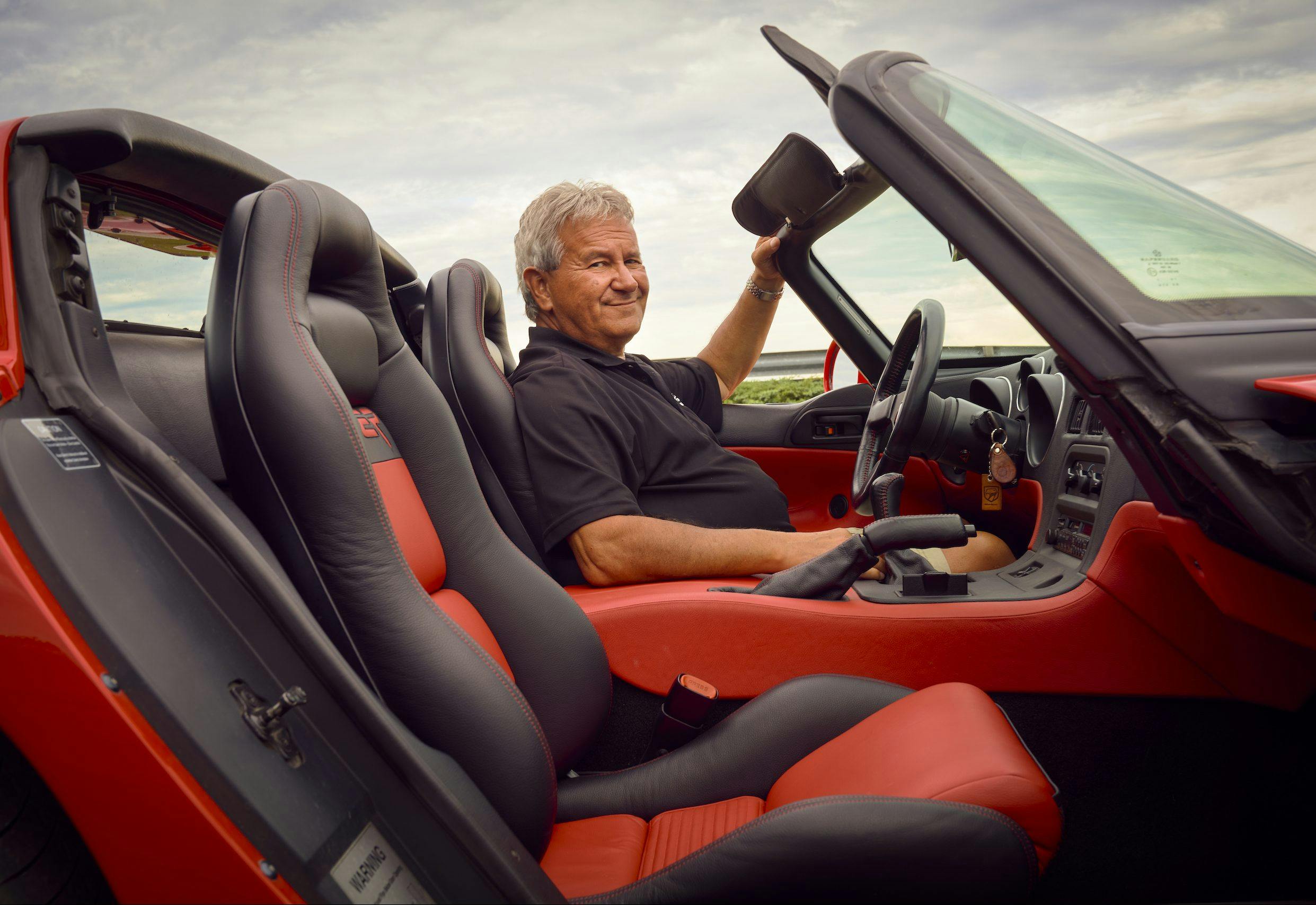
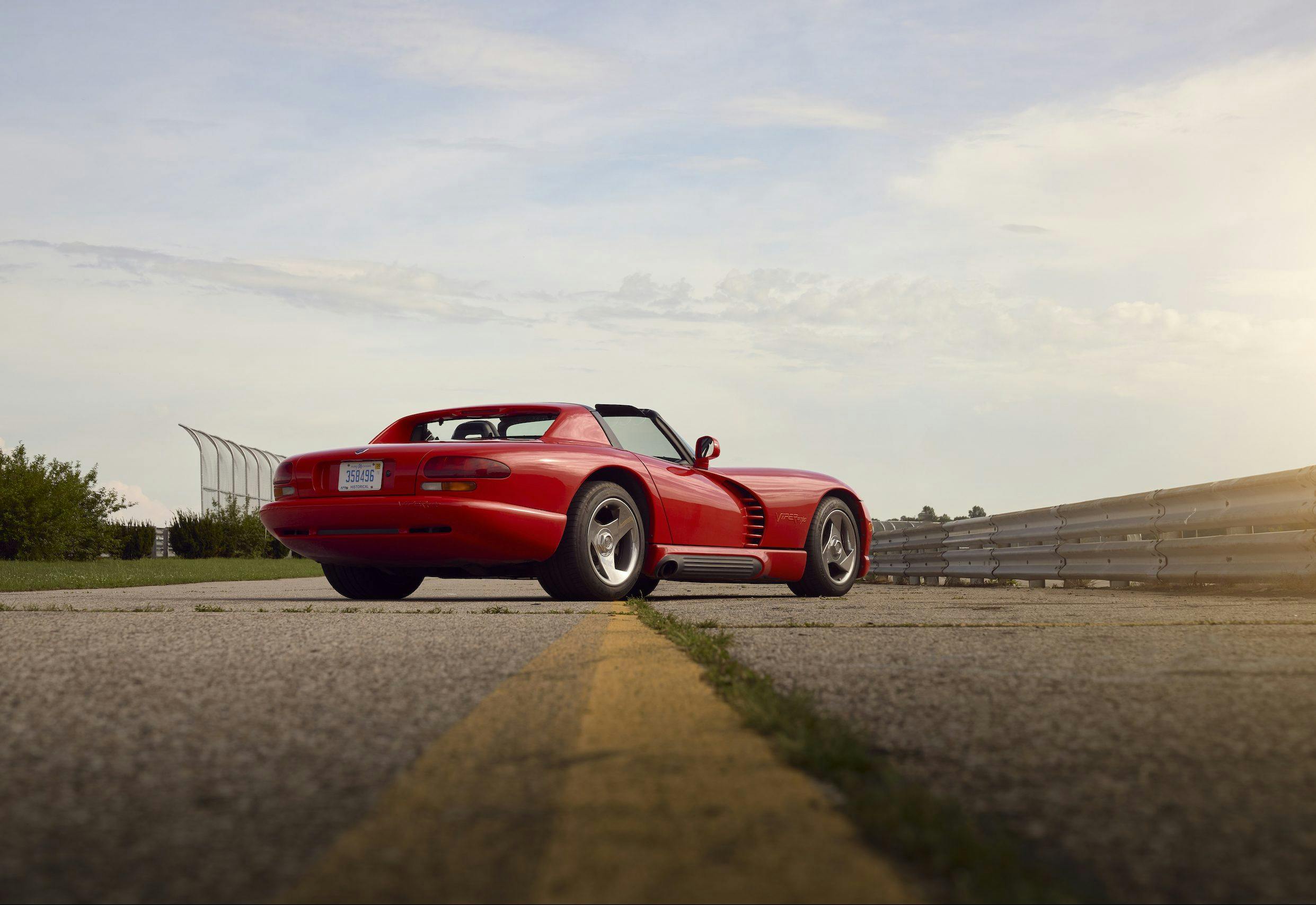


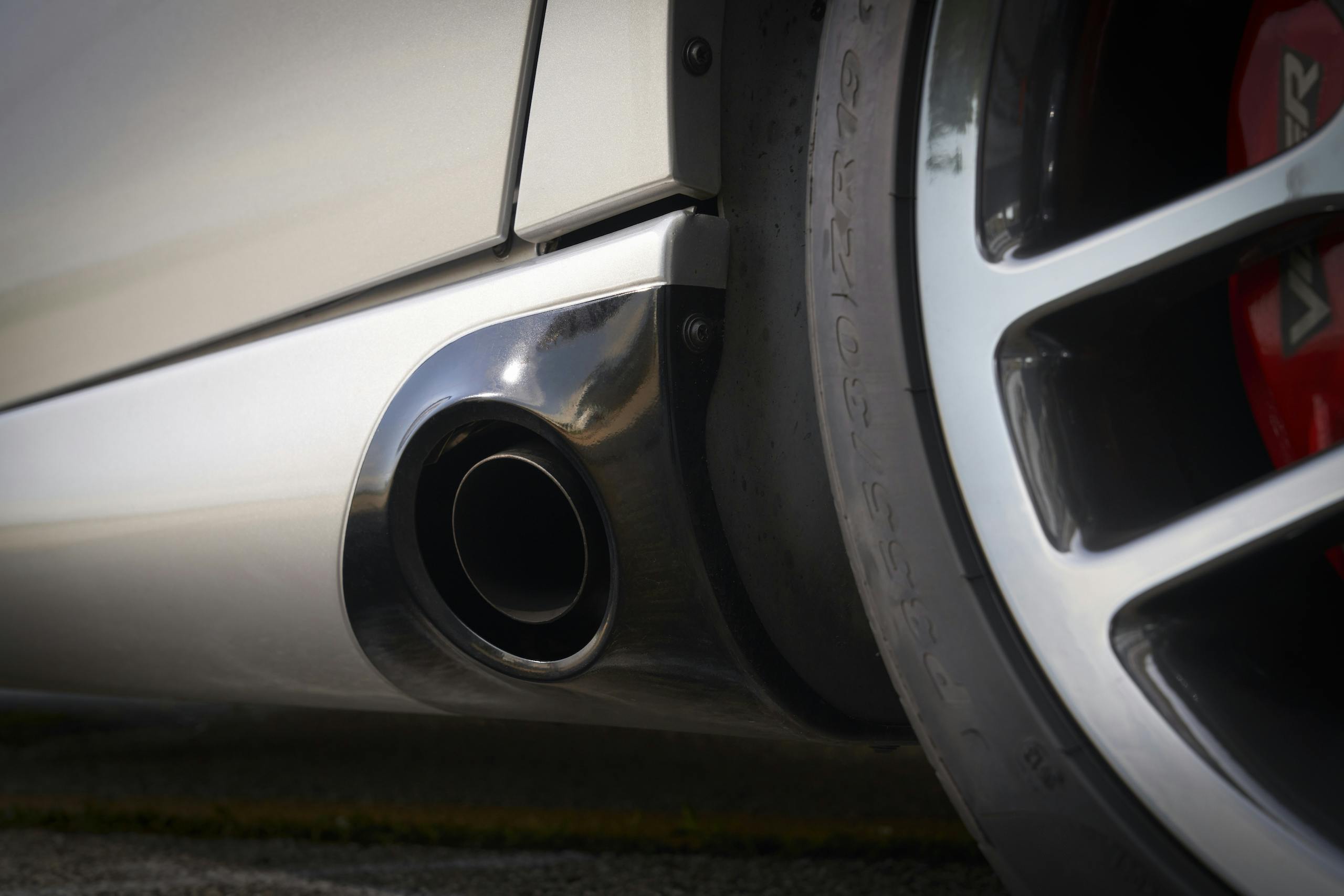
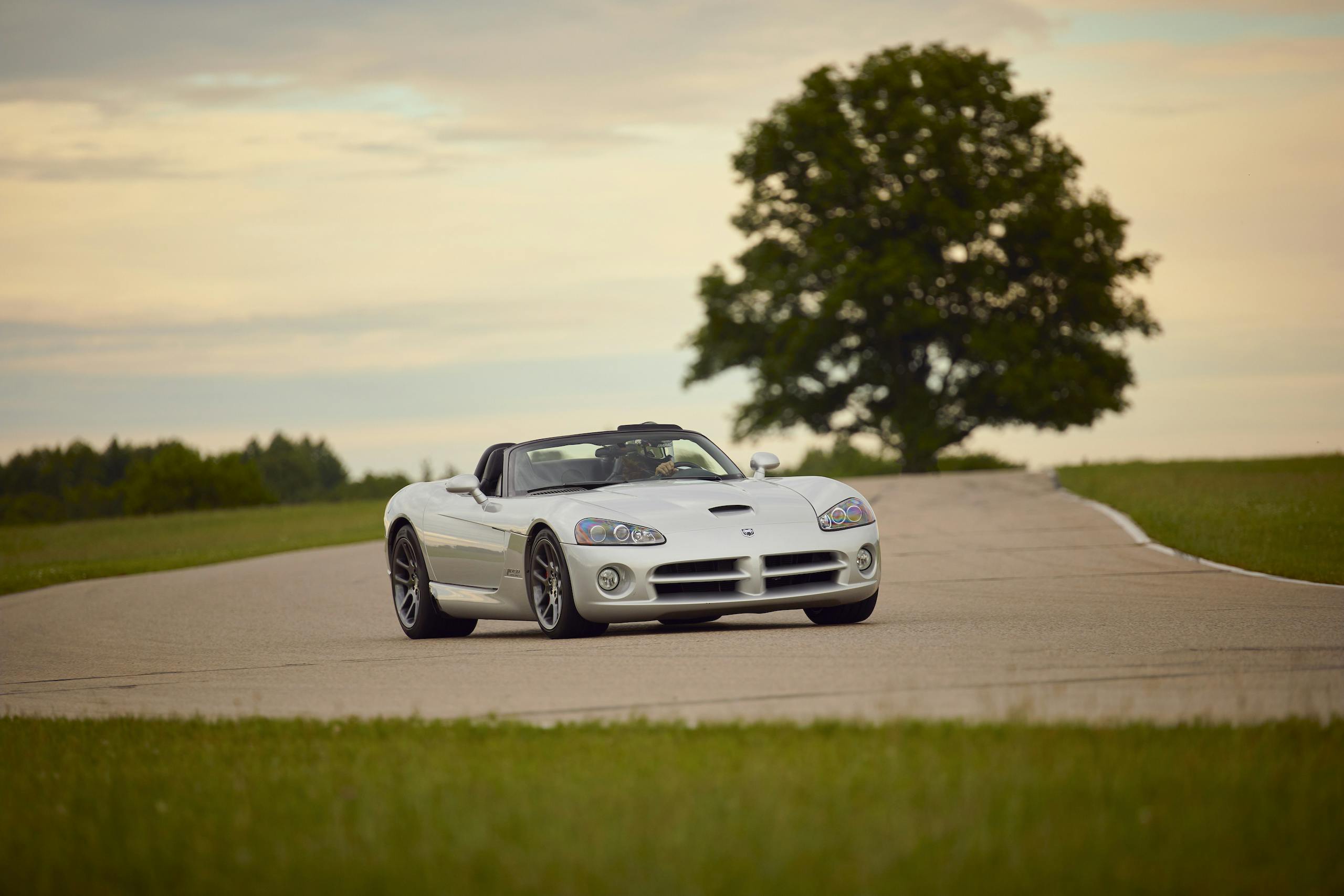

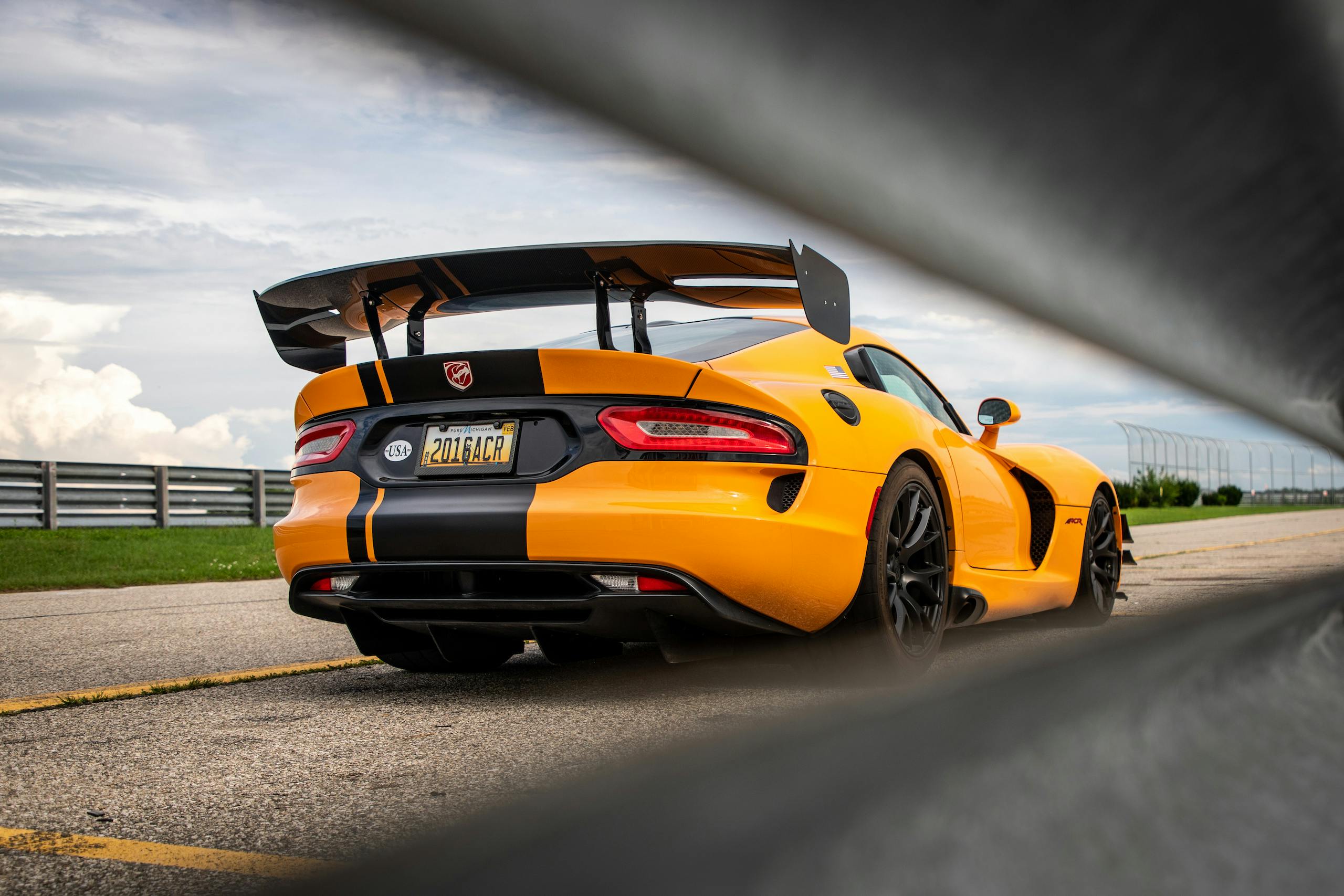
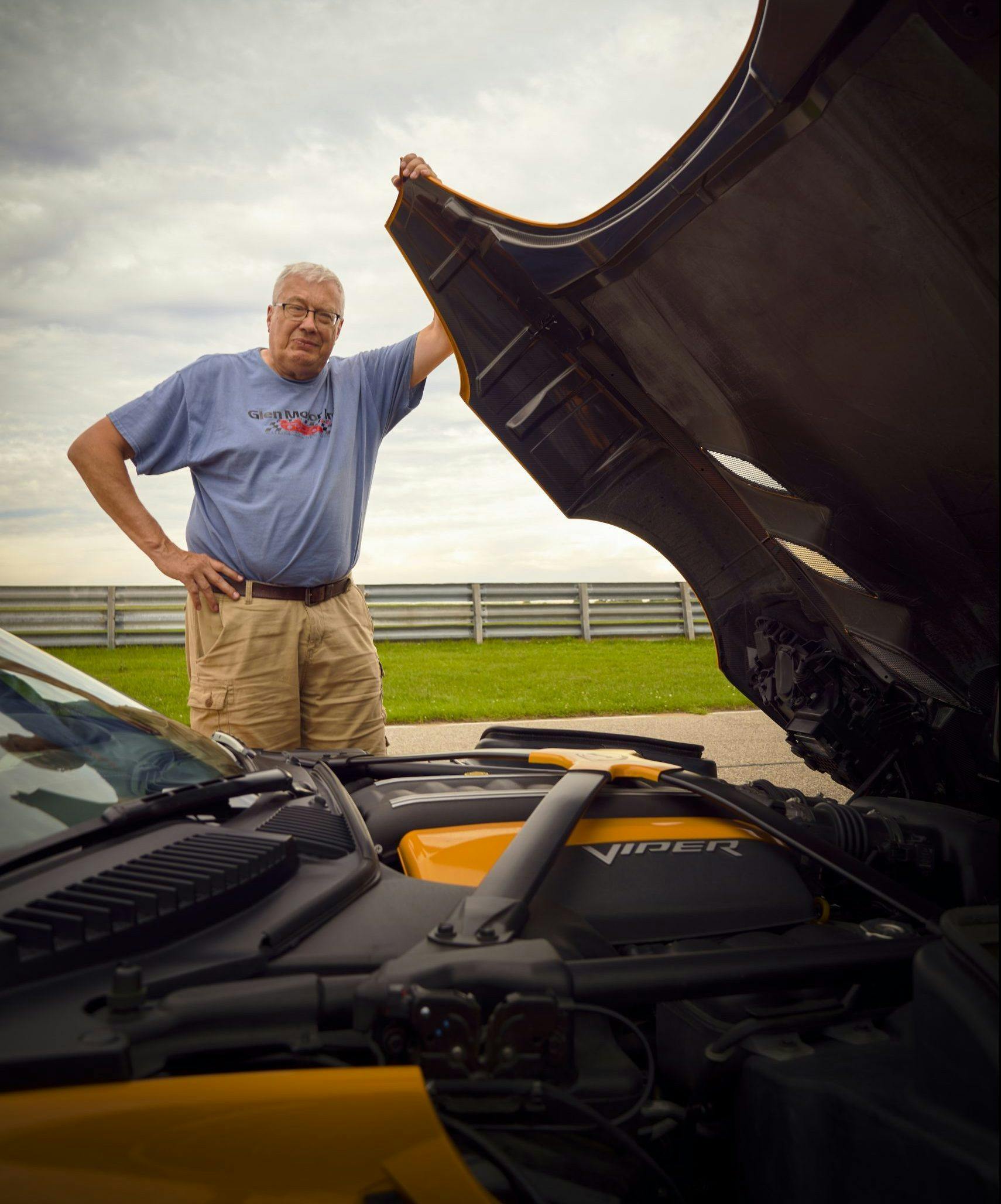
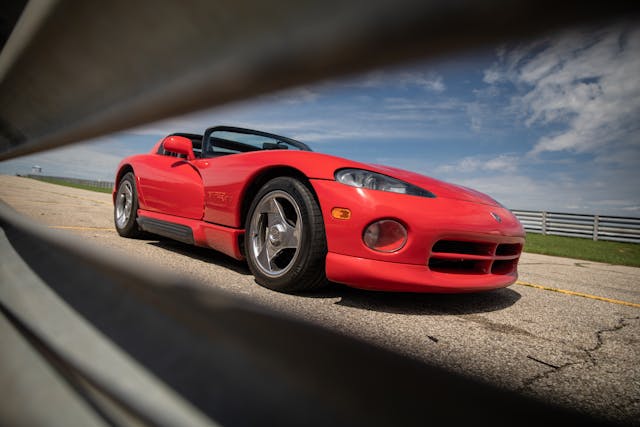
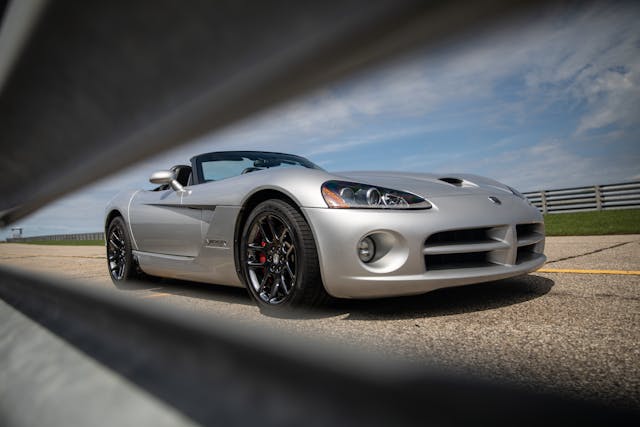












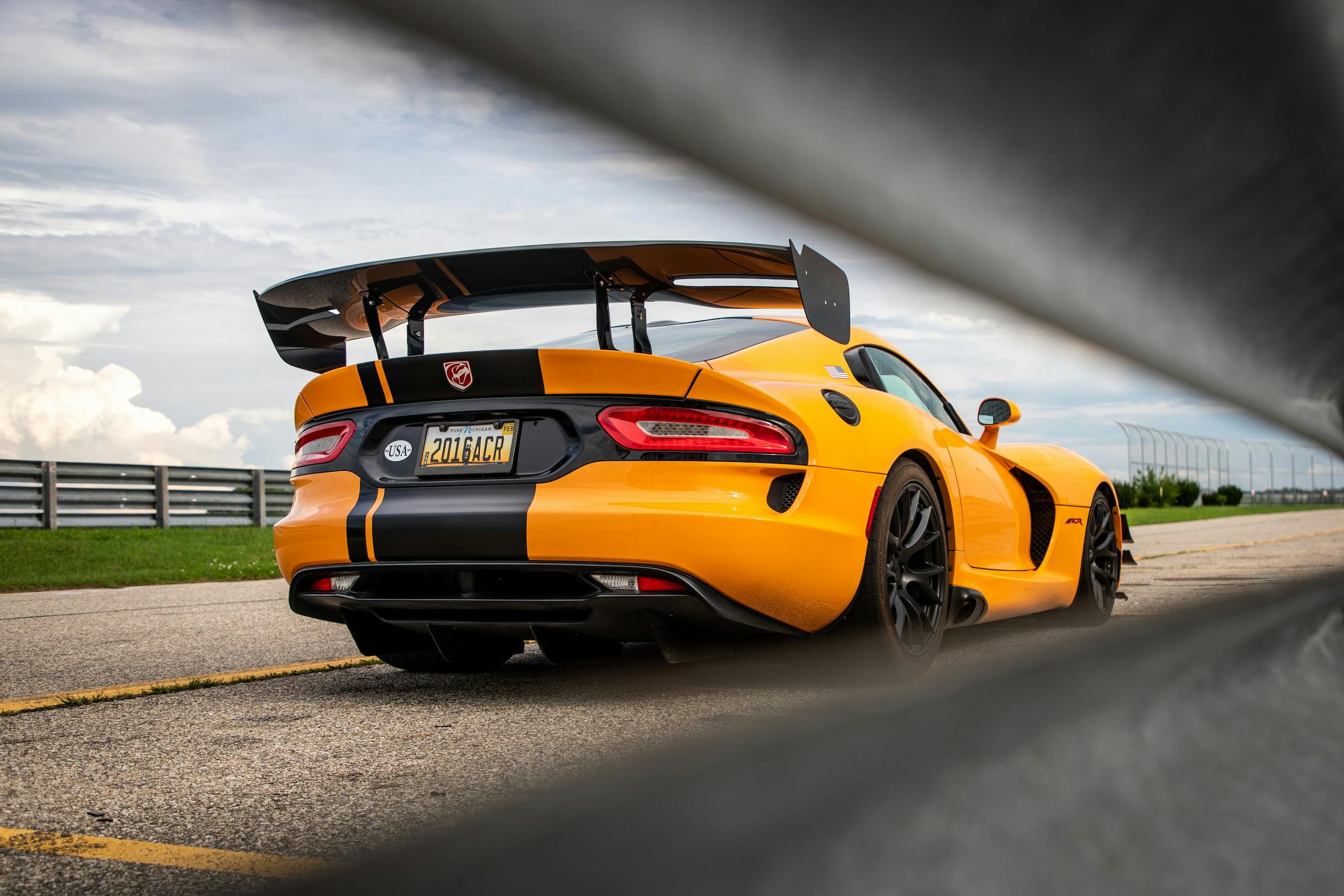

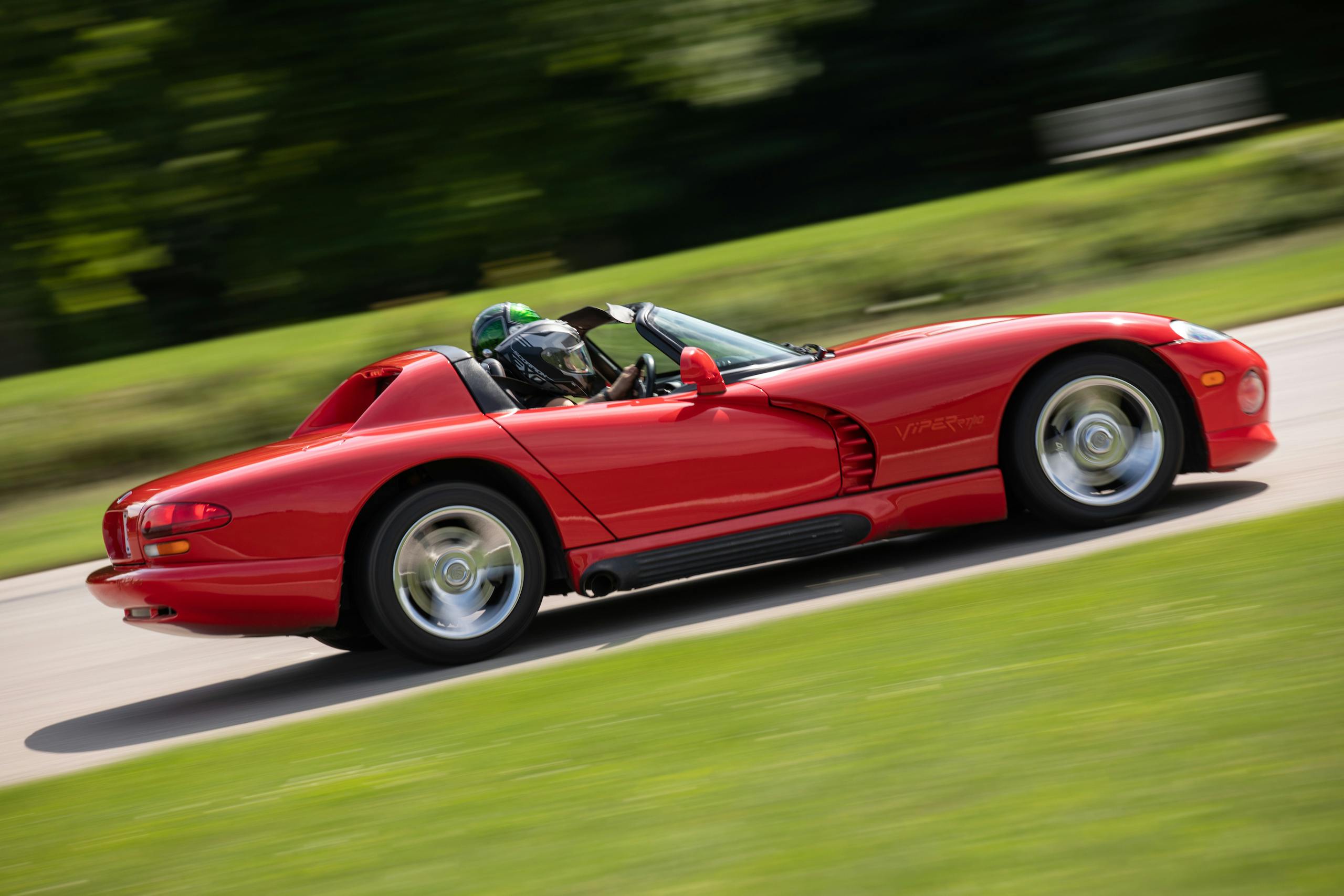
The Viper. gone bot not forgotten. Too bad we will likely never see it again.
I wish I could have driven one.
Also gone but not forgotten: Jack Baruth.
Panasonic’s Car Audio Division had 2 or 3 early Vipers as promotional vehicles. As I had one of the larger mid west Panasonic car stereo stores, my rep got us one of the Vipers for a few days. Rep and I put a “few” miles on the beast after it was delivered to my store. I remember being very impressed compared to the Mustangs, IROC’s and vettes of the era that I had driven.